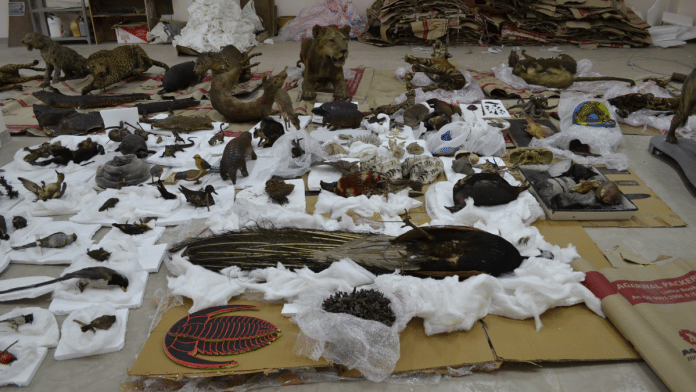Sawai Madhopur: For those who have never caught a glimpse of the Royal Bengal Tiger in its natural habitat, an exhibit at the Rajiv Gandhi Regional Museum of Natural History in Sawai Madhopur, Rajasthan, is one to look out for. A taxidermy mount of a tiger cub sits within a diorama mimicking a natural scene — complete with birds, trees, and wild animals — along with a plaque telling visitors all about the wild cat.
Visiting this museum is often an afterthought for those touring the nearby Ranthambore Tiger Reserve. Many of them don’t know that in 2016, this cub was almost lost to a fire that engulfed Delhi’s National Museum of Natural History (NMNH), the wild cat’s previous home. But thanks to the immense patience of Mohammed Yunus, the museum’s lead scientist, the dead cub gained a new life.
The Royal Bengal Tiger cub wasn’t the only one to move to the sleepy town after the Biblical inferno wiped out most of the capital’s natural history collection. Over 100 such taxidermy mounts as well as fossils of mammals, reptiles, birds, and other organisms, too, came to Rajasthan.
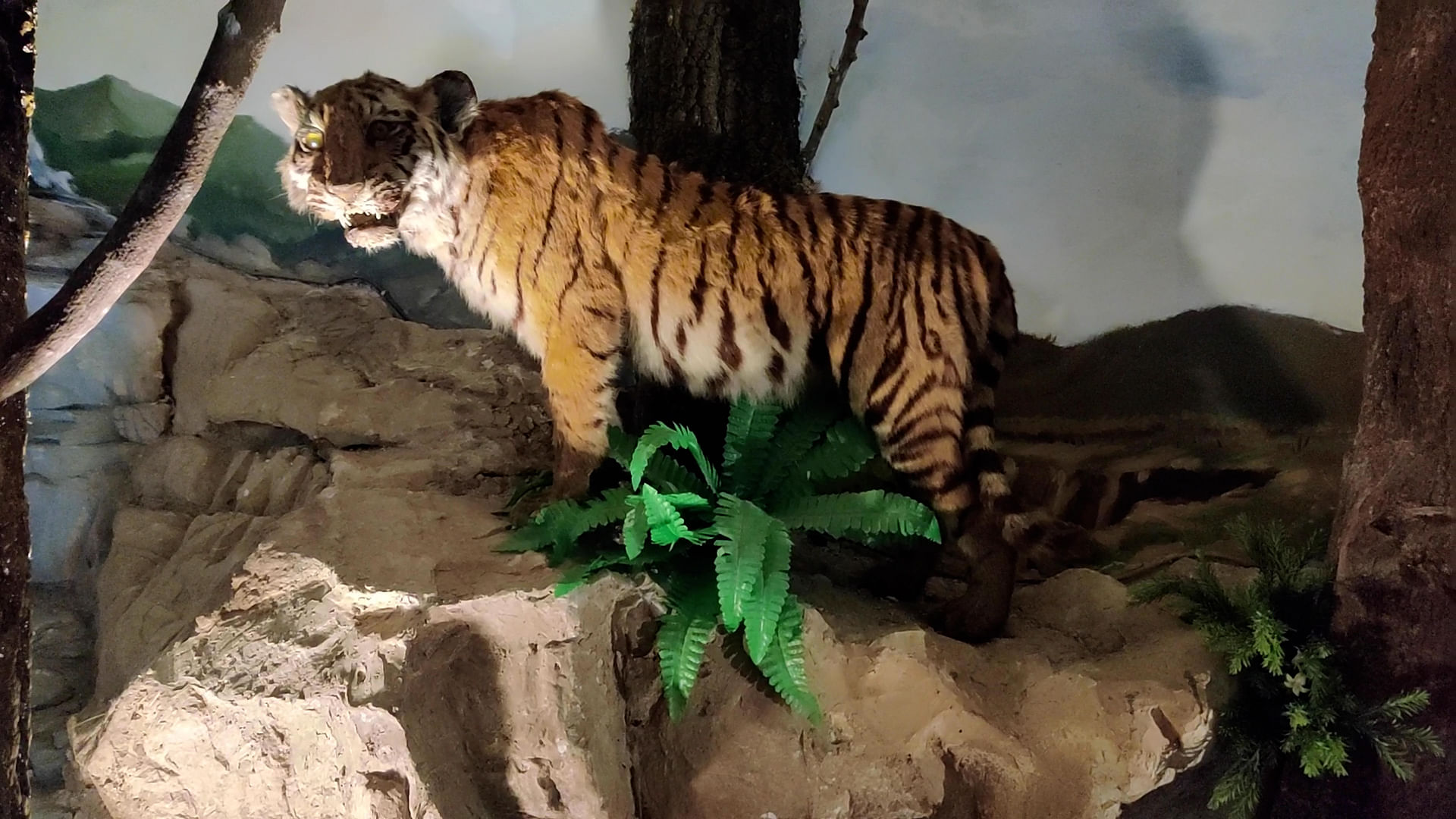
Since then, all of these charred and wilted specimens have been under the care of Yunus, whose painstaking task is to bring the dead back from the fire — and make them museum-ready again.
These were all damaged pieces that would have been thrown away. Now, they are narrating their own stories at the museum — telling visitors how precious they are, Yunus tells ThePrint.
Also read: More Indians are seeking moksha through science. Medical colleges have surplus corpses now
A shelter at Sawai Madhopur
The animals’ Sawai Madhopur home is a temporary shelter, though. They are awaiting a new home back in Delhi. A 6.5-acre plot at Bhairon Marg – behind Purana Qila – has been allocated for a new Natural History Museum in the city.
Naaz Rizvi, director of the museum, says that the prepared proposal is pending approval from the Ministry of Environment, Forest and Climate Change.
In Sawai Madhopur, Yunus is hunched over a gliding squirrel, gingerly studying the fur of the taxidermy mount, which is layered with soot and dust. Swabbing the fur with a cotton ball soaked in benzene, Yunus carefully removes the soot, explaining how they work on each patch of the specimen while checking for dermestid beetles.
The skin of the squirrel is as thin as paper and makes a rustling sound.
“The heat of the fire had made the skin brittle. It needs to be softened,” Yunush explains, showing how some parts of the skin have broken open. The paws of the squirrel are also coming apart — these will need to be carefully stitched back together.
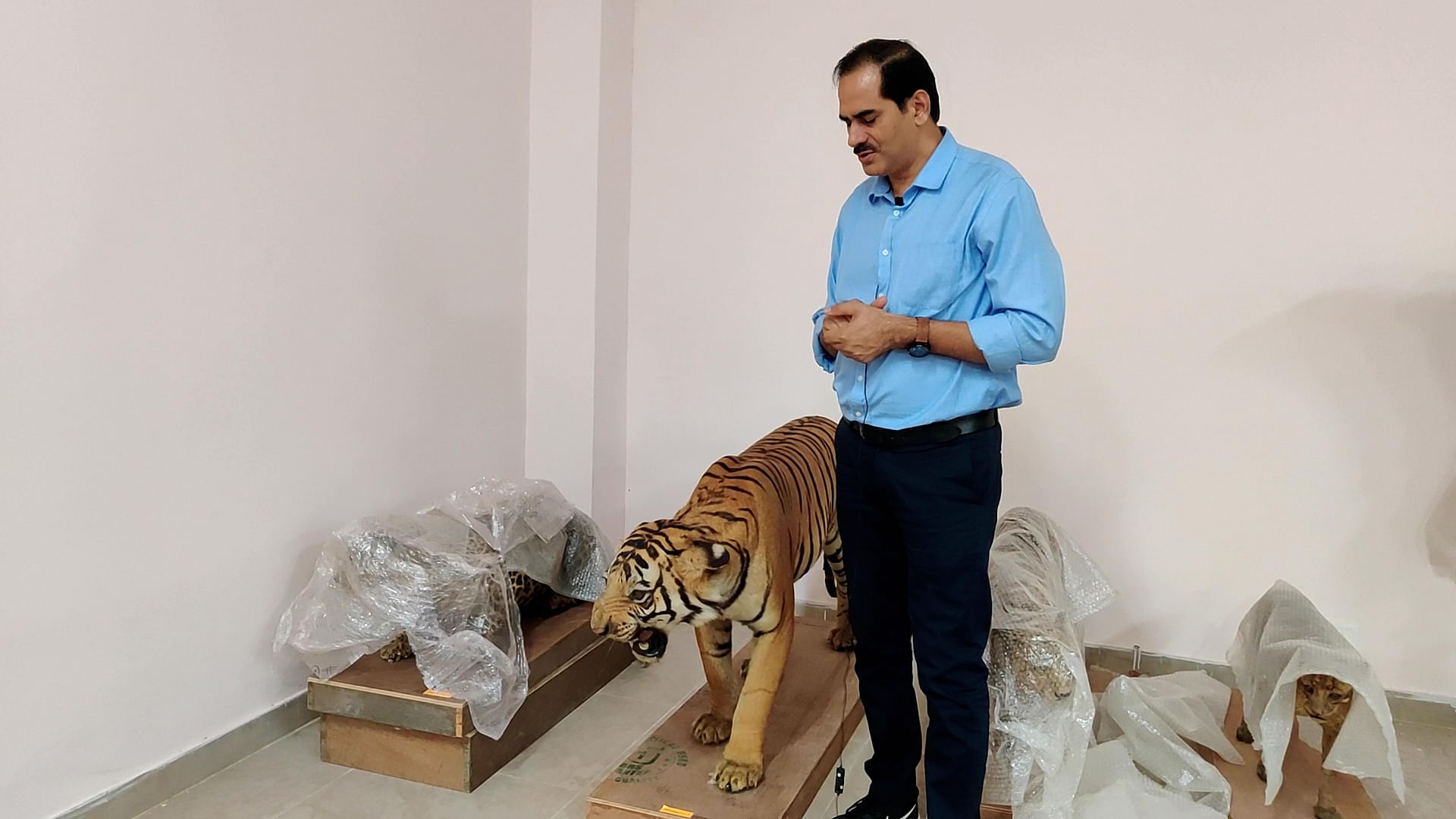
After cleaning, the specimens are covered in layers of cotton — each soaked in a different solution. Yunus then uses a hair dryer to blow over the cotton layers. This allows vapours of the chemicals to deposit on the surface of the specimen. This process is meant to restore the skin’s softness while also preventing bug infestation.
The mount is then packed and stored for further work.
“When we work on a specimen, it cannot be left midway. Forget attending family functions, weddings — we have to give all our time here,” he says.
Also read: National Museum guards, guides aren’t just worried about artefacts—’Will I have a job?’
Rescuing from the Delhi tragedy
When the six-storey museum in Delhi erupted into flames seven years ago, the team lost all the precious taxidermy mounts—except those on the first and second floors, which made their way to Sawai Madhopur. “We needed a proper place where they could be re-treated, and brought back into a good condition,” Rizvi says.
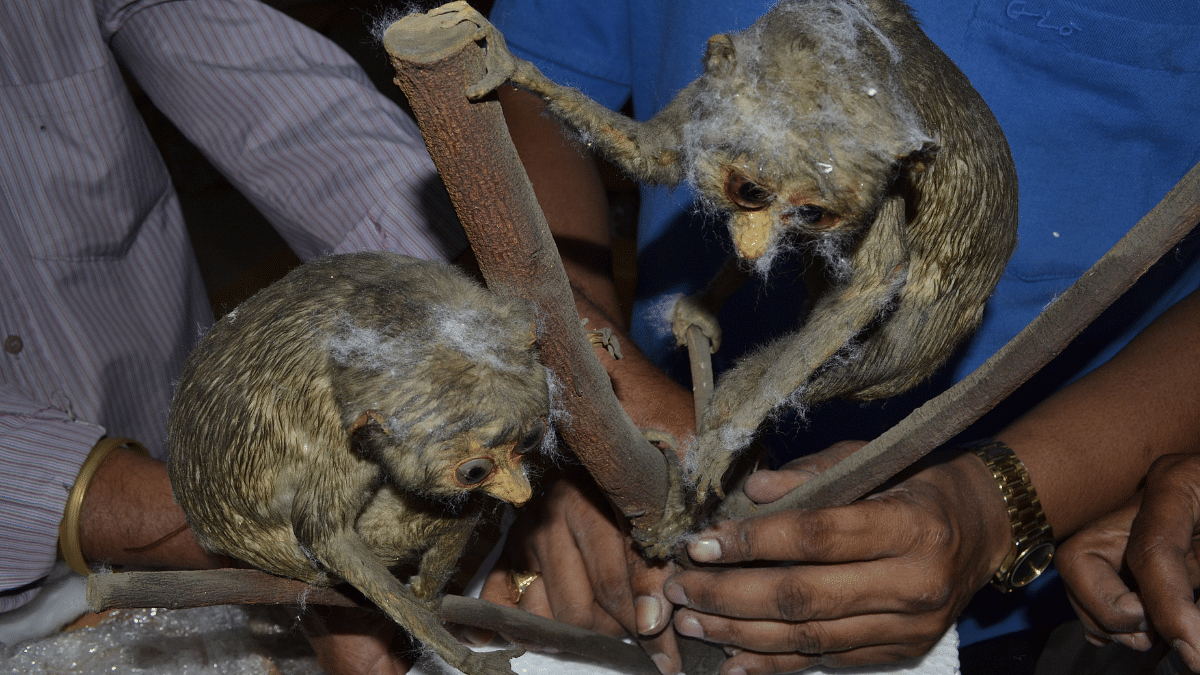
Yunus recalls that the use of water and carbon dioxide for dousing the fire damaged the specimens’ skin and fur.
“After the massive fire, we first identified the specimens that could be retained based on their condition. We then packed them in different boxes, categorised according to their conditions,” recalls Yunus.
A little later, he discovered that it also led to a beetle infestation in the fur.
Dermestid beetles can be very destructive to these taxidermy mounts, as their larvae feed on furs, skins, feathers, horns, and hair. If left untreated, they can destroy whole specimens. When Yunus received the specimens from Delhi, he saw that in many mounts, the hair had started falling off and the skin had become dry and brittle. Some of the bird species had become extremely fragile — their feathers had come loose. Some were broken in half.
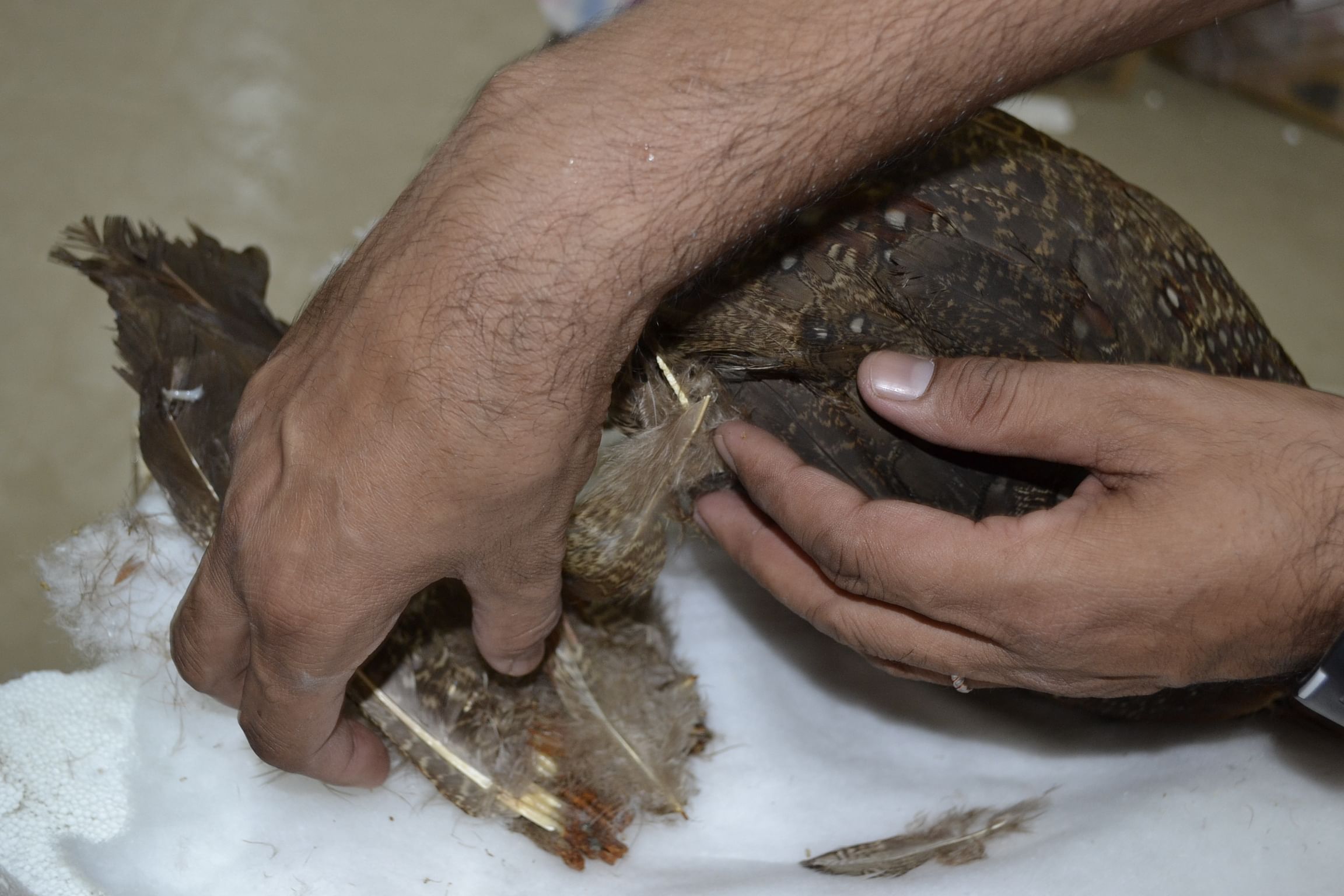
“We conducted a specimen-based study to determine how much time it will take for each specimen to be cured, and which specimens can be placed in dioramas the fastest,” Yunus says. The scientist and his team worked meticulously — melding, moulding, and modelling the dead animal into a full-bodied specimen. “We even completed the full body using gunny cloth fibres to create the fur,” he says.
Different chemicals are used for varied kinds of species. Experts identify the family and genus that the species belong to before they start the treatment.
“Since this was very precious government property, we did not want even a single specimen to get wasted,” Yunus explains.
Moreover, the scientist says that keeping the specimens in exhibits helps the team monitor them regularly — and carry out hygiene practices religiously.
If it is locked away in the reserve room, we might end up missing signs of deterioration,” Yunus says, confident that these specimens will survive for another 200 years at least.
The team also fumigates the specimen every 15 days to prevent any contamination.
The lack of scientists in the field
The Sawai Madhopur museum was the perfect home for the taxidermy mounts — with ample space to display all of them, and most importantly, Yunus. Scientific fervour was especially important in the preservation of the specimens, which is no foolhardy job.
“If it is just a display trophy kept at restaurants or hotels, you can do anything to it. You can just put a patch on it or something to cover the damage,” Rizvi says. “But for us, it has to be very scientifically done. For example, if something has to be dried, we cannot just blow dry it — that will damage the skin.”
It’s a skill that’s hard to find in India due to the glaring lack of professional courses in this field in the country.
Yunus mentions that only two Indian institutes offer courses in science-based museology: Maharaja Sayajirao University of Baroda and Aligarh Muslim University (AMU).
“Most of the people who get into this profession take up private work — at restaurants, hotels, or people’s private collections. But the work is not very scientific. Nobody is there to see if the restoration will remain good for another hundred years,” Rizvi says.
Most of the posts for scientists at natural history museums across the country remain vacant. “We can’t find trained individuals,” the director adds.
Another reason, Yunus explains, is that the job requires handling and studying animal carcasses to check if they can be turned into taxidermy mounts. “You have to deal with smelly, rotting bodies of animals that are handed over by zoos or forest departments,” he says.
Moreover, most people are unaware of the importance of taxidermy — a word they barely recognise outside a museum.
“This is a connection to our past. These specimens provide a chance to conduct studies on how animals have evolved. If we don’t preserve it, a lot of knowledge is potentially lost for future generations,” the scientist says.
To generate interest in museology among the youth, Yunus uses spare taxidermy mounts to teach school students visiting the museum occasionally how restoration is done and how exhibits are designed. Every six months, Yunus takes a new specimen, and students use it to design a diorama.
Climate change, VR, evolution
The clearance of the proposal for the new Delhi museum has taken this long because there have been changes in the draft over time, Rizvi says. Concepts like climate change, plastic pollution, and other threats to life will feature more prominently in the new museum.
While the team plans to put interactive virtual reality (VR) exhibits, the “real fossils and specimens have to be at the centre of it all”, she adds. “Unless a person sees the real thing, they will not really understand what we are describing.”
Rizvi is already in the capital; the NMNH administration is functioning out of a few rooms allocated to them at the CGO complex. “It is an ideal place to have that museum because we already have the zoo and the crafts museum there – and then the science centres. [It is good] especially for tourists who have very little time—[it will be] very easy for them to go from one place to another,” she says.
Meanwhile, the NMNH team in Delhi is focusing on outreach activities with school children and college students to raise awareness about conservation.
“We do competitions, workshops, campaigns. We have used nukkad natak medium also – that is easy for all sorts of people to understand,” Rizvi says.
Till the time Delhi’s museum becomes a reality, the restored specimens are giving Sawai Madhopur’s natural history museum its raison d’etre.
“We have so many specimens — spotted deer, leopard, sloth, golden langoor, bear, mountain goat, snow leopard. You won’t even believe that they have been treated. There are some fossil eggs that were shifted here, some dating back to over 200 years. Some of the eggs that were transported are now extinct,” Yunus says proudly.
A huge restored yak, a giant rhino, a lion, and a tiger are among the countless specimens in the museum’s reserve room. Covered in plastic, they too await a space to be able to tell their history.
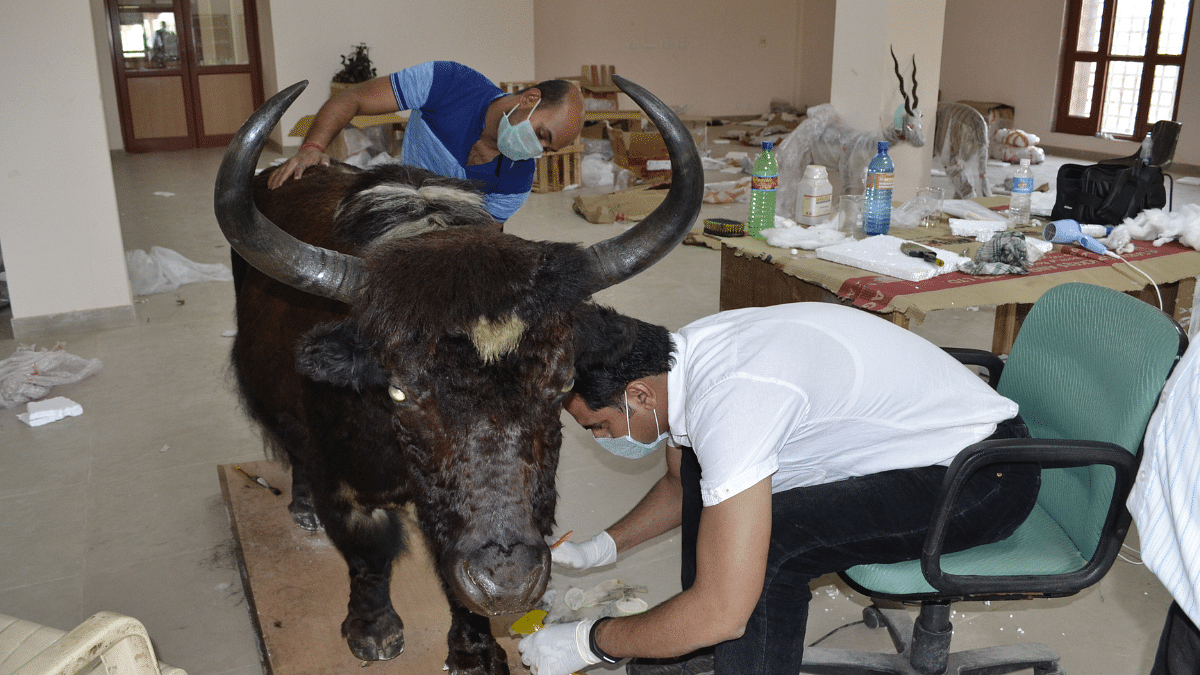
(Edited by Humra Laeeq)



